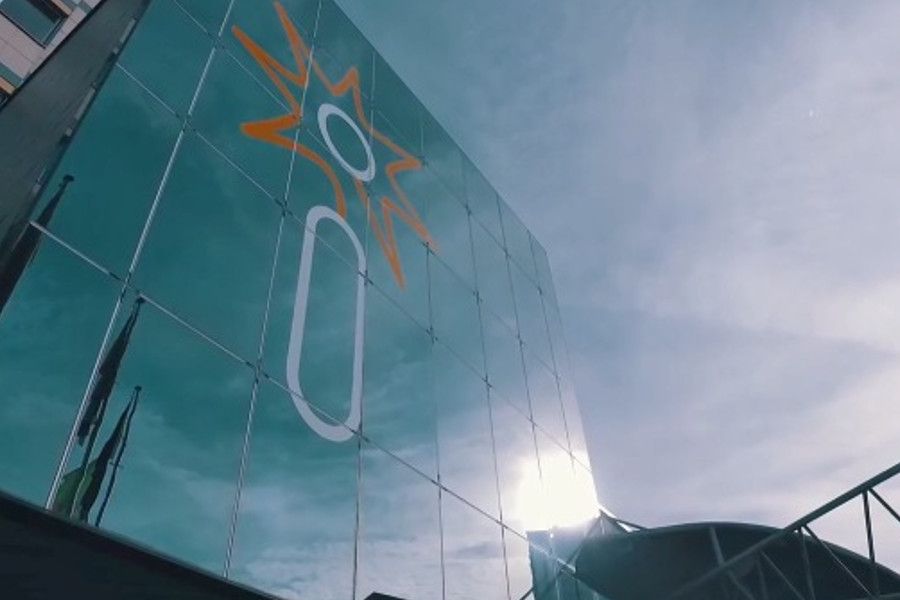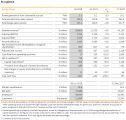innogy confirms strategy and outlook for 2018

innogy SE is rigorously pursuing its focused growth and investment strategy for value-added development, and confirms its outlook for the full year 2018. Half-year 2018 results are in line with expectations: adjusted EBIT for the first six months of the year amounted to EUR 1,553 million, down 10 per cent compared to the same period the previous year. Adjusted net income decreased by 23 per cent, to EUR 662 million. Among the reasons for this are the non-recurrence of positive one-off effects in 2017 in Retail in Germany as well as an unexpected commodity price increase driven by cold weather in the Netherlands. In the Grid & Infrastructure division, earnings were lower due to new regulatory requirements for gas in Germany. Weather effects had a negative impact on the Renewables division. Both adjusted EBIT and adjusted net income are within the forecast range for the current fiscal year. Overall, innogy expects adjusted EBIT of about EUR 2,700 million and adjusted net income of more than EUR 1,100 million for the full year 2018. For details on business performance in the individual divisions, please refer to the half-year report for 2018, available at www.innogy.com/half-year-report-2018.
Uwe Tigges, Chief Executive Officer of innogy SE: “We are consistently driving our growth strategy forward. This is our main task and we are focusing on it. We are ensuring value-added growth for our company by investing in promising business areas such as renewables, high-speed internet and the universal expansion of eMobility both in Germany and abroad. At the same time we are bolstering our core business in the retail and grid areas through innovation and digitalisation. In the grid area, every euro invested is an important contribution to a clean future: the energy transition can succeed only if smart grids are in place. We are fully committed to this, in the interests of our employees, customers and shareholders.”
Bernhard Günther, Chief Financial Officer of innogy SE: “Our retail business is facing steadily increasing competition. That is why we are focusing on developing our customer base with an eye to long-term value, rather than on mere customer numbers or sales volumes. Nevertheless, we recorded a net customer gain in Germany in May and June. The slight decline in grid earnings is in connection with the new regulatory period for gas. In addition, our renewables business suffered in the first six months of 2018 from lower wind levels, especially in the UK. Overall, business performance in the first half of the year was in line with our expectations, which are reflected in our outlook for 2018. We therefore confirm our outlook for the current fiscal year both for Group and segment levels.”
Since the start of 2018, innogy has achieved further important milestones in implementing its strategy for value-added business performance in its core regions. The US is one of the company’s strategic growth markets. innogy has acquired a number of onshore wind development projects there with a total capacity of more than 2,000 megawatts. In addition, innogy has signed an agreement with US solar developer Birdseye for the joint development of 13 solar projects with a total capacity of approximately 440 megawatts. The company has also successfully entered the Australian market, with the acquisition of project rights for two utility-scale solar power plants with a combined capacity of more than 460 megawatts. Including the acquisition of further projects in Germany, the company secured development projects in different stages representing a total of more than 3.3 gigawatts in the first few months of 2018 alone. Furthermore, in Germany, innogy was also successful in the second German offshore wind auction with its 325-megawatt project Kaskasi, once again delivering proof of its competitiveness in a challenging market.
In the Grid & Infrastructure division, too, innogy further expanded its leading position in Germany and internationally: in Europe, innogy is one of the major distribution system operators, with a total grid length of 574,000 kilometres, corresponding to approximately one-and-a-half times the distance to the moon. In Germany, it operates the longest and most powerful electricity grid, with a length of 350,000 kilometres. Around 150 terawatt hours of electricity flow through innogy’s grid every year, equivalent to more than a quarter of Germany’s entire power consumption. innogy is already well ahead in the process of integrating renewable energy systems such as solar plants or energy storage units into the power grids, which is key to the energy transition: with around 340,000 facilities, approximately 20 per cent of the 1.7 million facilities in Germany are connected to the innogy distribution system. innogy intends to strengthen its efforts to drive forward the expansion of fast internet – in particular in rural regions. Investment in the expansion of broadband is to at least double in the next few years.
With about 22 million electricity and gas customers, innogy is one of Europe’s leading energy retailers, and leads the field in Germany with 7.7 million customers. To stay ahead in this tough competitive environment, innogy regularly optimises its retail processes and structures, with a focus on customer value rather than simply generating volume (“value over volume”). The objective is to ensure sustainable earnings by offering first-class products and services. innogy therefore focusses on securing stable and lasting customer loyalty. Customer satisfaction is proof that this strategy is working: innogy’s retail and customer service as well as its retail brands once again achieved top grades in independent market studies in the first half of 2018. Key elements in securing long-term customer loyalty are innovative products and services, such as SmartHome and eMobility solutions for residential and corporate customers that are tailored to customer needs and make their lives easier. innogy is the leader throughout Germany for both SmartHome and eMobility solutions. These solutions are part of innogy’s range of “Energy+” products. They also form the basis for the data-driven business models that are gaining massively in importance in retail, and which innogy intends to further drive forward in the future.
In the growth field of eMobility, innogy is building on its pole position as the leading supplier of charging infrastructure in Germany: it has set up key partnerships with Aldi Süd and Deutsche Post DHL Group. The company is also reinforcing its presence in the US market with its acquisition of leading eMobility provider BTCPower.
In November 2017, innogy and SSE agreed to merge their British retail activities within a new British energy supply and services company. Preparations are right on schedule: with the agreement of shareholders at the Annual General Meeting of SSE and the appointment of the future CEO and CFO of the new company, the parties have achieved important milestones in recent months. Subject to approval by the competent competition authorities and regulatory bodies, the transaction should be completed by the end of 2018 or the beginning of 2019.
Electricity production up 5 per cent compared to previous year
In the first half of 2018, innogy produced about 6 terawatt hours of electricity, or 5 per cent more than in the same period the previous year. A large portion of this was attributable to generation from renewables. Around 4.8 terawatt hours came from the Renewables division: 77 per cent from onshore and offshore wind farms and 23 per cent from run-of-river power stations.
Total capital expenditure up approximately 36 per cent
innogy’s capital expenditure in the first half of 2018 rose by 36 per cent year on year to about EUR 900 million. Taking divestitures into consideration, net capital expenditure amounted to about EUR 726 million of a planned total of some EUR 2.5 billion for 2018. Steering net capital expenditure is relevant in terms of keeping the target leverage factor (ratio of net debt to adjusted EBITDA) of about 4.0, which supports innogy’s credit rating.
Investments in Renewables in the first half of 2018 mainly focused on onshore wind projects in Italy and the US as well as onshore and offshore wind projects in the United Kingdom. A rise in investments inGrid & Infrastructure was due mainly to higher spending on the expansion and modernisation of grid infrastructure and the expansion of broadband activities in Germany. In Retail, greater capital expenditure was recorded in the Energy+ business in the Netherlands and Belgium. The significant increase in investments in eMobility is due to the acquisition of BTCPower in the US.
Net debt about EUR 18 billion
As at 30 June 2018, innogy’s net debt was about EUR 18 billion, a rise of some EUR 2.3 billion compared to 31 December 2017. This increase was primarily due to the dividends paid out in April and the seasonally induced, regularly negative free cash flow in the first half-year: whereas electricity and gas sales volumes at the beginning of the year are above average on account of the seasonal effect, customer payments are spread evenly throughout the year.
Number of employees up slightly
As at 30 June 2018, innogy employed 43,040 people. Part-time positions were considered in these figures on a pro-rata basis. This represents an increase of 647 employees compared to 31 December 2017. The rise can be attributed partly to the acquisitions in the Renewables division and the full consolidation of a new grid partnership company.
innogy confirms its outlook both for Group and segment levels. The basis for the dividend pay-out is adjusted net income, 70 to 80 per cent of which innogy intends to continue paying out. The company aims for a leverage factor of around 4.0. The ratio of net debt to adjusted EBITDA continues to be one of the key financial metrics for managing the company’s debt.
Legal disclaimer
This document contains forward-looking statements. These statements are based on the current views, expectations, assumptions and information of the management, and are based on information currently available to the management. Forward-looking statements shall not be construed as a promise for the materialisation of future results and developments and involve known and unknown risks and uncertainties. Actual results, performance or events may differ materially from those described in such statements due to, among other things, changes in the general economic and competitive environment, risks associated with capital markets, currency exchange rate fluctuations, changes in international and national laws and regulations, in particular with respect to tax laws and regulations, affecting the Company, and other factors. Neither the Company nor any of its affiliates assumes any obligations to update any forward-looking statements.
Source of information
innogy & Profibusiness.world
Date
August 28, 2018
Fotogalerie
Translator
News and information
Agriculture
Animals and pet supplies
Automotive
Banking and insurance
Boats and shipping industry
Building and architecture
Business
Education
Electrical industry
Electronics
Engineering
Environment
Finance, taxes and accounting
Flowers and plants
Food and beverage industry
For companies
Forestry and wood processing
Furniture
Gastronomy and hotel industry
Glass, ceramics and porcelain
Healthcare and pharmacy
Hobby and garden
Home and household goods
HR
Hygiene, drugstore and cosmetics
Charity and social responsibility
Chemical
Institution
IT and computers
Law and legislation
Management and certification systems
Minerals
Office
Packaging and packaging technologies
Paper industry
Plastic and rubber industry
Power engineering
PR and marketing
Printing and printing technology
Railway industry
Real estate
Safety, security and protection
Science and research
Social services
Sport and relax
Steel and iron processing
Telecommunications and the internet
Textile and leather industry
Tourism
Toys, games and entertainment
Transport and logistics




